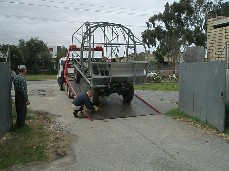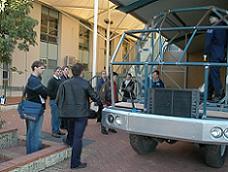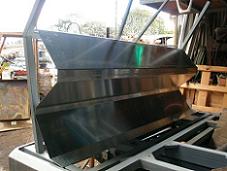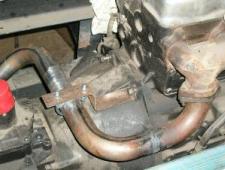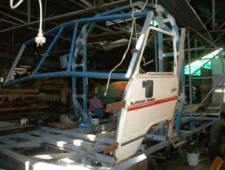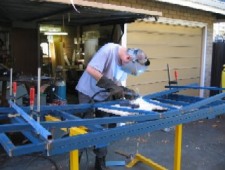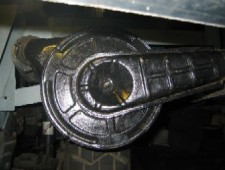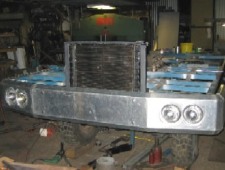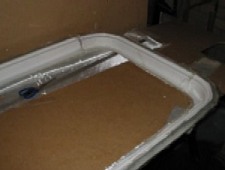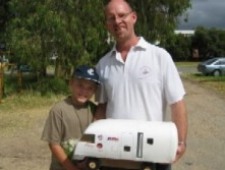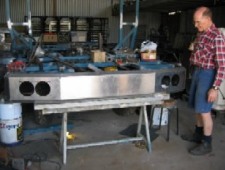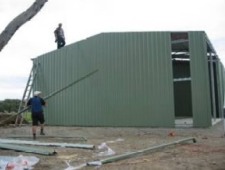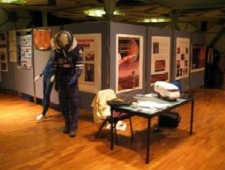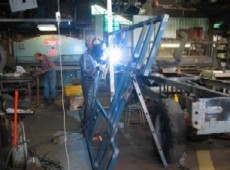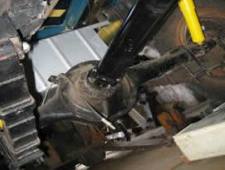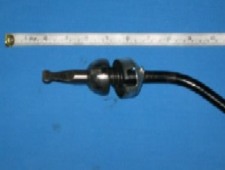In Perth the weather now stays hot until well into March, even April. This makes work on the Star chaser difficult, especially if it involves heat-sensitive materials such as expanding urethane foam. However as the weather changes, it becomes easier to work on the machine and progress has again picked up. The most important developments over the past month has been mounting the floor pedals, brake booster and steering column to the firewall; the finalisation of interior framework; the completion of detailed construction plans for the forward control steering linkage; the further implementation of the engine restart plan; and the commencement of the floor sandwich.
The firewall serves as an important support element for a number of vehicle subsystems, including the control console, gear levers, pedals and steering column, among others. Work fitting these has progressed well, with few holdups. Thanks to earlier wooden mock-ups of the drivers station built during the design stage, the steering column has fitted almost perfectly, and fits an average-sized person well when seated in one of the newer style seats (see photo). The steering is likely to be quite heavy, though, and may need a linear booster in the steering linkage to make the vehicle more driveable. The accelerator pedal is next. Then the seats need to be mounted on turntables so that they can be turned to face the rear of the cabin for camping.
Persistent problems with the stiffness and strength of the steering box mounting now appear to have been solved, by buttressing the steering box with a specially-designed gusset. The remaining steelwork is now done except for the interiors of the airlock doors, and the side window frames (actually Mitsubishi L300 van doors which are to be welded into place, but which have been kept off to enable easier access to the front cabin).
Another troublesome element has been the control linkages to transfer control of the gearbox forward to the cab-over-engine position. This required a special design for the Toyota engine-gearbox which is not native to the FC Landrover chassis. A great deal of detailed design work was done by MSA engineer David Willson, and the plans are now in the hands of Tony de Groot, an engineer working for Immersive Technologies, who will oversee fabrication of the linkages at their Osborne Park workshop. Mr. de Groot has also volunteered to help with the engine restart, and has specified a list of electronic and mechanical parts required to make that happen, most of which have now been obtained by the project Manager.
The floor sandwich assembly, delayed until the onset of cooler weather, has now also commenced. This involves custom-fitting sheets of 1.6mm aluminium under the body. Insulating strips are cemented to the steel frame before fitting the aluminium plates to thermally uncouple them from the frame, since they will absorb a lot of radiant heat from a desert surface or road. On top of the frame are sheets of marine plywood which forms an easy to make floor. Between the wood and the metal insulating foam is sprayed, which further insulates the cabin. The floor must be installed before the fibreglass work can commence which is the next major task.
 Steering Wheel Now Mounted. | 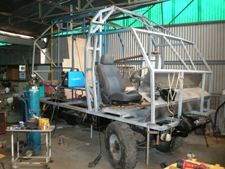 Overall view, April 2008. |

